MacBook Pro 14-inch vs Dell XPS 13: Which laptop wins?
Everything you need to know to decide between these top-tier Apple and Dell laptops
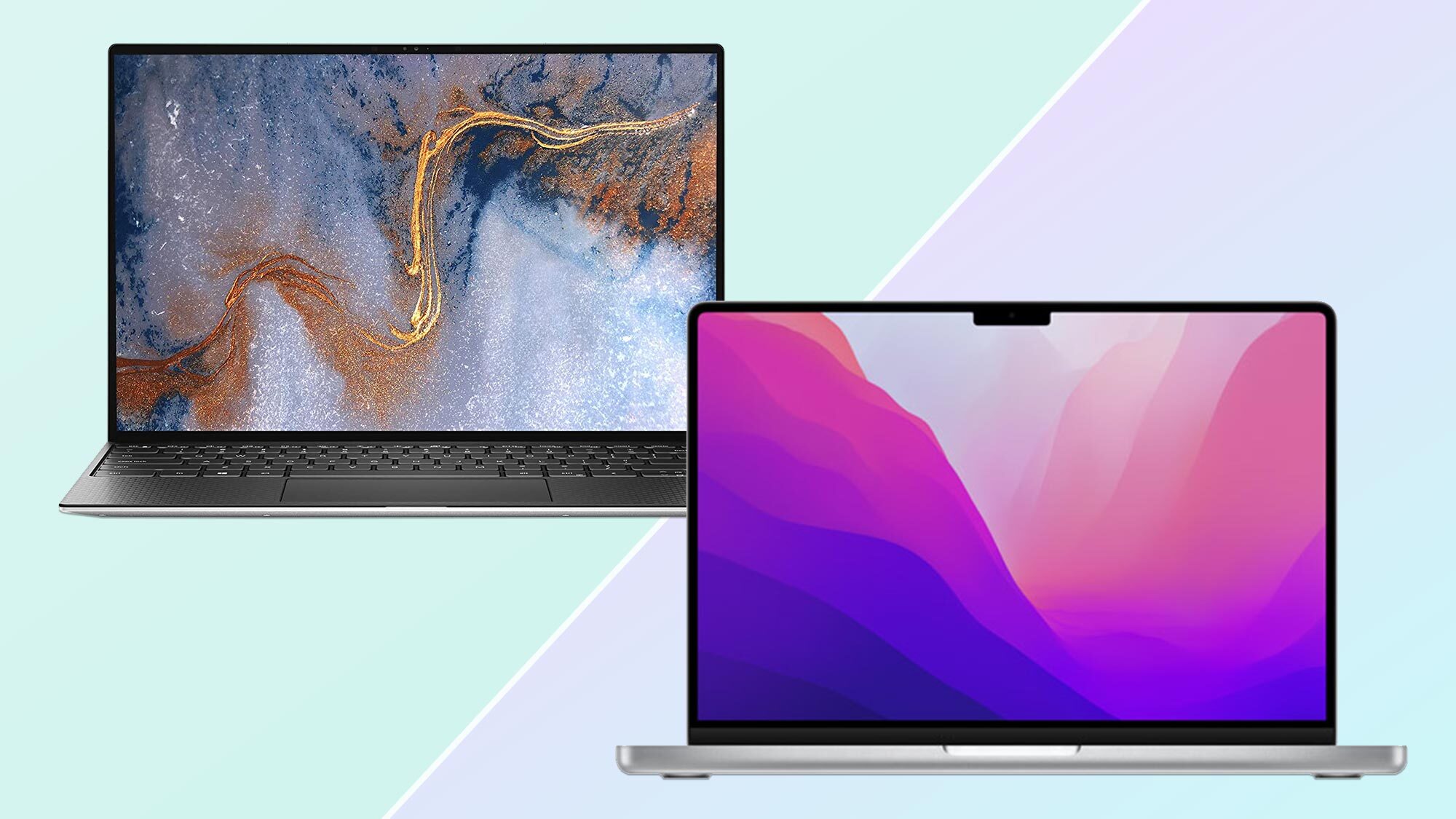
The 14-inch Apple MacBook Pro quickly became one of our favorite laptops when it launched in 2021. In many respects, this is the MacBook Pro Apple enthusiasts have longed for, thanks to its powerful M1 Pro chip, vibrant display, thinner bezels and MagSafe charger. Aside from the notch above the display, we think it and its larger sibling the 16-inch MacBook Pro 2021 are Apple’s best MacBook to date.
During the October 2021 launch event for these new MacBook Pros Apple compared them against the latest Windows laptops manufactured by competitors. To help you make a more informed buying decision, we're doing the same by comparing the new 14-inch MacBook Pro to one of our other favorite laptops: the 2021 Dell XPS 13 with an OLED upgrade.
This face-off draws on our experience testing and using these laptops for our Dell XPS 13 OLED review and our MacBook Pro 14-inch review, so check those out if you want more information about either laptop. Last year we compared the differences between their predecessors, the 2020 XPS 13 vs MacBook Pro. Now we get to see how the latest iterations stack up against one another.
MacBook Pro 14-inch vs Dell XPS 13 OLED: Specs
| Header Cell - Column 0 | MacBook Pro 14-inch | Dell XPS 13 OLED |
|---|---|---|
| Starting price | $1,999 | $1,699 |
| Screen | 14.2-inch Liquid Retina XDR display (3024x1964 pixels, 254ppi) | 13.4-inch OLED touchscreen (3,456 x 2,160 pixels) |
| Battery life | 14:08 (1080p) | 7:59 (1080p) |
| Processor | M1 Pro (8-core CPU, 14-core GPU or 10-core CPU, 16-core GPU), with optional M1 Max with up to 10-core CPU and 32-core GPU | 11th Gen Intel Core i7-1185G7 |
| Graphics | (See above) | Intel Iris Xe integrated graphics |
| Storage | 512GB to 8TB | 512 GB SSD (1/2 TB also available) |
| Memory | 16GB to 64GB | 16 GB |
| Ports | Thunderbolt 4 (x3), HDMI, MagSafe 3, headphone jack, SD memory card slot | 2 Thunderbolt 4/USB-C ports, headphone jack, microSD card reader |
| Webcam | 1080p FaceTime HD camera | 720p |
| Dimensions | 12.3 x 8.7 x 0.6 inches | 11.6 x 7.8 x 0.5 inches |
| Weight | 3.5 pounds | 2.8 pounds |
MacBook Pro 14-inch vs Dell XPS 13 OLED: Price and release date
Both of these laptops are available now. You can purchase the MacBook Pro 14-inch for a starting price of $1,999 from the Apple store. The Dell XPS 13 has a starting price of around $950 on Dell's website, but that's an entry-level model that doesn't have the eye-catching OLED display.
If you customize an XPS 13 with just the OLED upgrade, it will cost you around $1,600 (depending on when you buy), but if you kit it out with the maximum 32 GB of RAM and 2 TB SSD you can expect to pay just over $2,000. The build we reviewed (and the one we’re comparing the 14-inch MacBook Pro to) has an Intel Core i7-1185G7 processor, Intel Iris Xe integrated graphics, 16 GB of RAM and a 512 GB SSD. At the time of writing, this configuration costs just over $1,600 — $1,636.59, to be precise.
The $1,999 entry-level 14-inch Pro features an M1 Pro chip with an 8-core CPU, a 14-core GPU, 16 GB of unified memory and a 512 GB SSD for storage. You can pay extra to configure it with a better chip, more memory, and more storage. If you deck out the 14-inch MacBook Pro with all the best components, from an M1 Max chip with a 10-core CPU and a 32-core GPU to 64 GB of unified memory and 8 TB of storage, expect to pay about $5,899.
Clearly Dell’s laptop wins in terms of affordability, though when you kit it out with an OLED display it isn't that much cheaper than the entry-level 14-inch MacBook Pro.
MacBook Pro 14-inch (2021) vs Dell XPS 13 OLED: Design
The MacBook Pro 14-inch and Dell XPS 13 each feature an aluminum chassis. They’re also very thin, making them easy to carry around wherever you go.
Coming in at 12.3 x 8.7 x 0.6 inches and weighing 3.5 pounds, the 14.2-inch MacBook Pro is slightly larger and heavier than its predecessor, the 13-inch MacBook Pro with M1 (12 x 8.4 x 0.6 inches, 3 pounds). The laptop is decidedly heavy but that also helps it feel like a premium product.
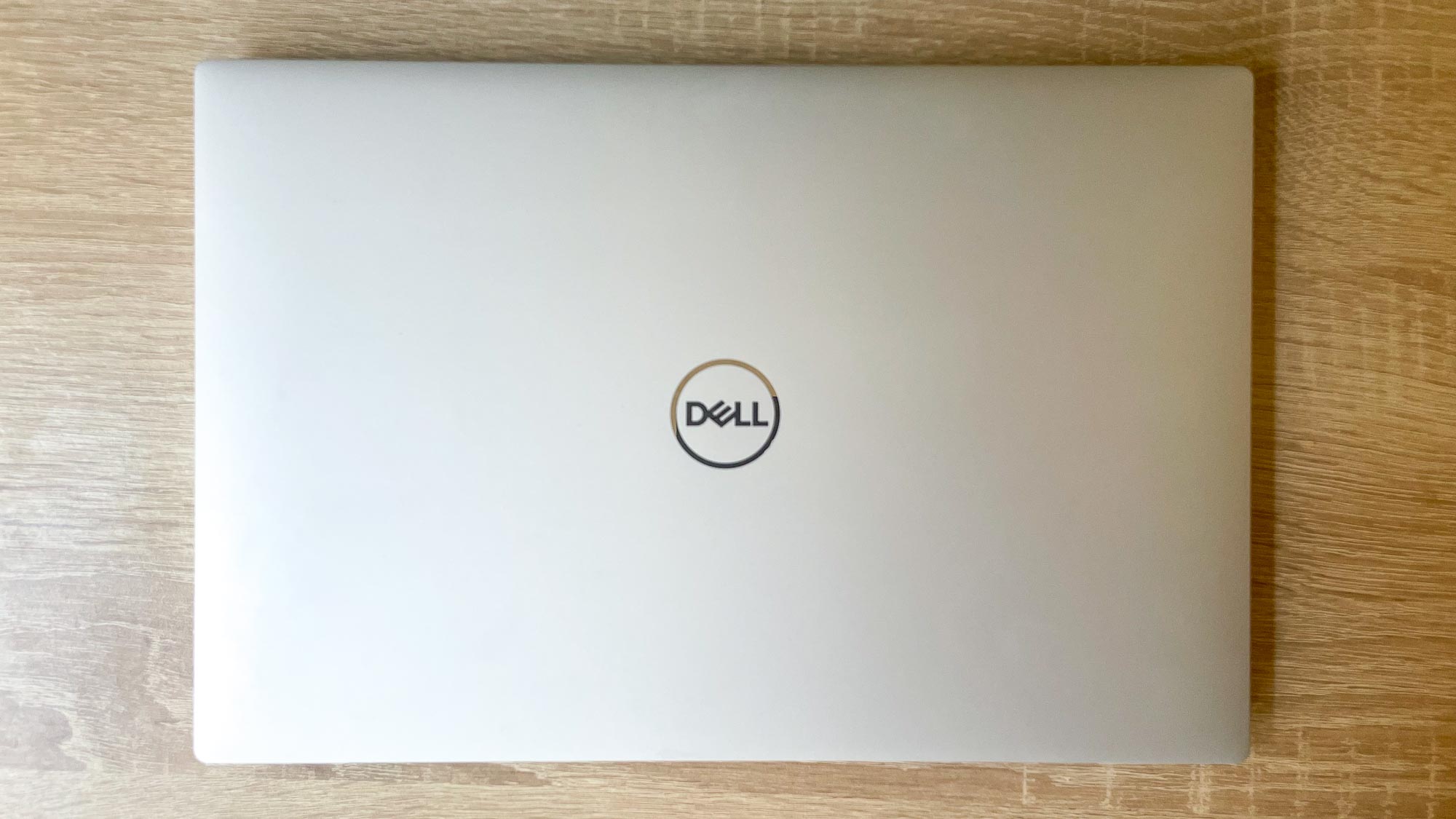
At 11.64 x 7.82 x 0.58 inches and 2.8 pounds, the OLED-equipped XPS 13 weighs as much as the aforementioned MacBook Air with M1. However, it is lighter than the M1 Pro-powered 14-inch MacBook Pro.
Due to being a little over half a pound lighter, we give this win to the XPS 13.
MacBook Pro 14-inch (2021) vs Dell XPS 13 OLED: Display
The MacBook Pro’s Liquid Retina XDR display is one of its best new features. It’s a gorgeous screen, albeit one without touch capability, and the only option you have if you're buying a new 14-inch MacBook Pro. Conversely, the Dell XPS 13 allows you to choose between a Full HD screen (either touch or non-touch), a 4K touchscreen, or the 3.5K OLED touchscreen. Assuming you don't hate the idea of a touchscreen, the variety of displays available for the XPS 13 is an added bonus.
The 14-inch Pro has a 14.2-inch mini-LED display with a native resolution of 3024 x 1984 pixels (254 pixels per inch). It supports HDR and incorporates Apple’s ProMotion adaptive display technology, letting it achieve refresh rates of up to 120Hz. It emits up to 487.8 nits according to our light gun — making it super bright.
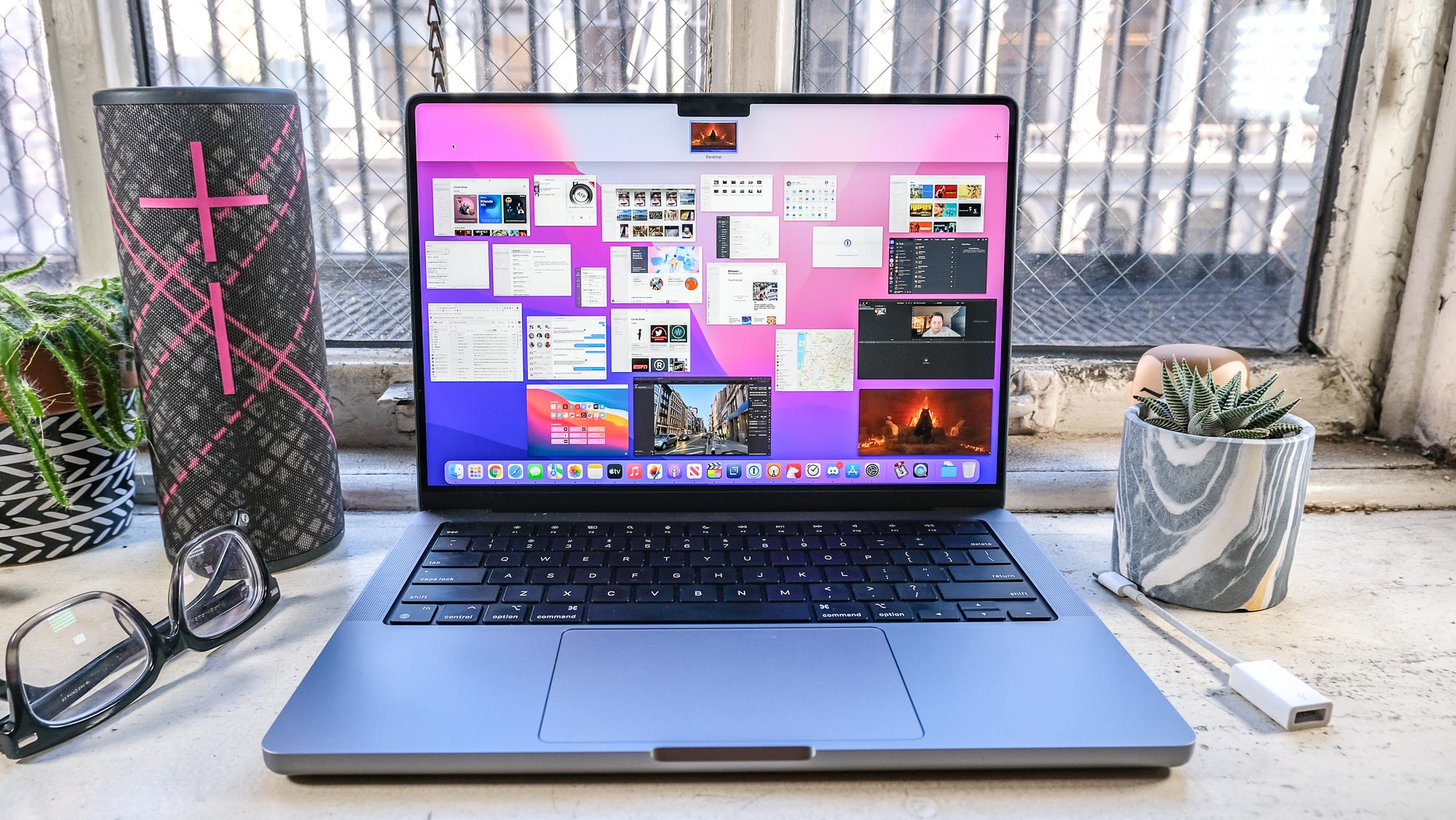
Dell’s XPS 13 OLED is capable of displaying images in 3.5K. That’s not 4K but its image quality is so crisp that you will barely notice a loss of pixels (especially on a 13-inch screen). The 3456 x 2160 display supports HDR, which makes it exceptional for watching films. As noted in our review, you’ll want to keep a cleaning cloth around if you frequently use the touchscreen as the device is vulnerable to picking up prints and smudges.
This one is a tough call. The XPS 13 has a higher pixel count but the MacBook Pro features a higher refresh rate at 120Hz (compared to the XPS 13’s 60). The touchscreen functionality of the Dell XPS 13's OLED display is nice, but this may not matter to some users. We’ll let you determine the winner in this category.
MacBook Pro 14-inch (2021) vs Dell XPS 13 OLED: Ports
Port-wise, the Apple MacBook Pro 14-inch packs 3 Thunderbolt 4/USB4 ports (supporting DisplayPort), 1 HDMI port, an SDXC card slot and a headphone jack. The MagSafe 3 charging port is one of its best (and most welcome) features.
The Dell XPS 13 has two Thunderbolt 4/USB4 ports, a headphone jack and a microSD card reader. You can plug the USB-C charger on either side of the device, which is a nice touch. Of course, the MacBook Pro offers the same convenience, as it also supports charging via USB-C and has USB ports on both sides.
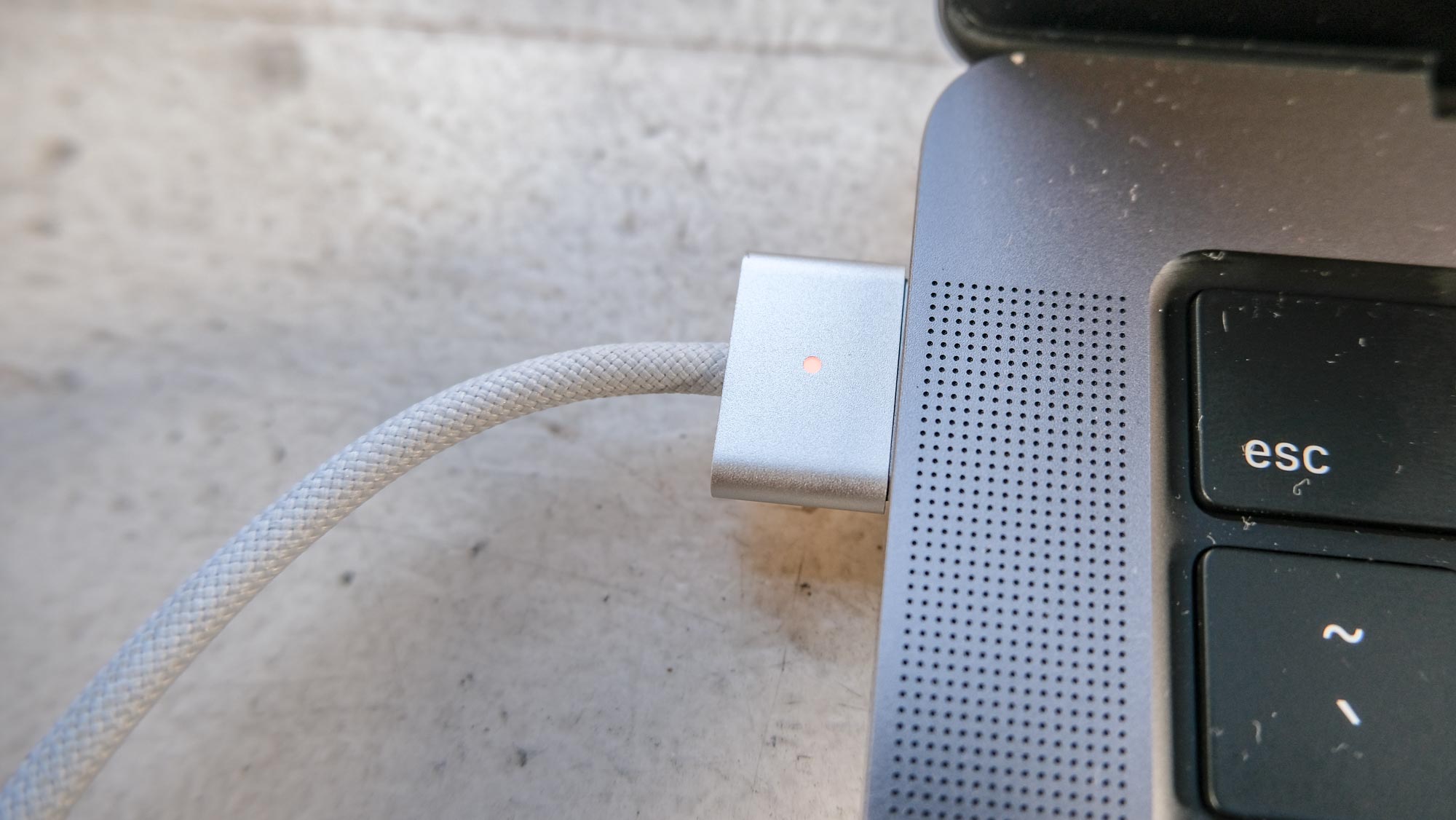
Neither laptop supports USB-A, which is a disappointment. The Dell XPS 13 does at least come with a USB-A adapter. It would have been nice if Apple packed one with either of the new MacBook Pros.
Apple’s device wins here due to the HDMI power and having 3 Thunderbolt ports instead of 2.
MacBook Pro 14-inch (2021) vs Dell XPS 13 OLED: Performance
We found the XPS 13 OLED to be quite performant in our review, but how does it stack up against the M1 Pro-powered MacBook Pro 14-inch?
The XPS 13 OLED (11th Gen Intel Core i7-1185G7, Intel Iris Xe integrated graphics, 16 GB of RAM) scored 5,420 on the Geekbench 5.4 multi-core CPU benchmark. That’s impressive, but the MacBook Pro 14-inch (M1 Pro w 10-core CPU, 16-core GPU, 16-core Neural Engine) absolutely demolishes it, scoring 12,477 on the same test.
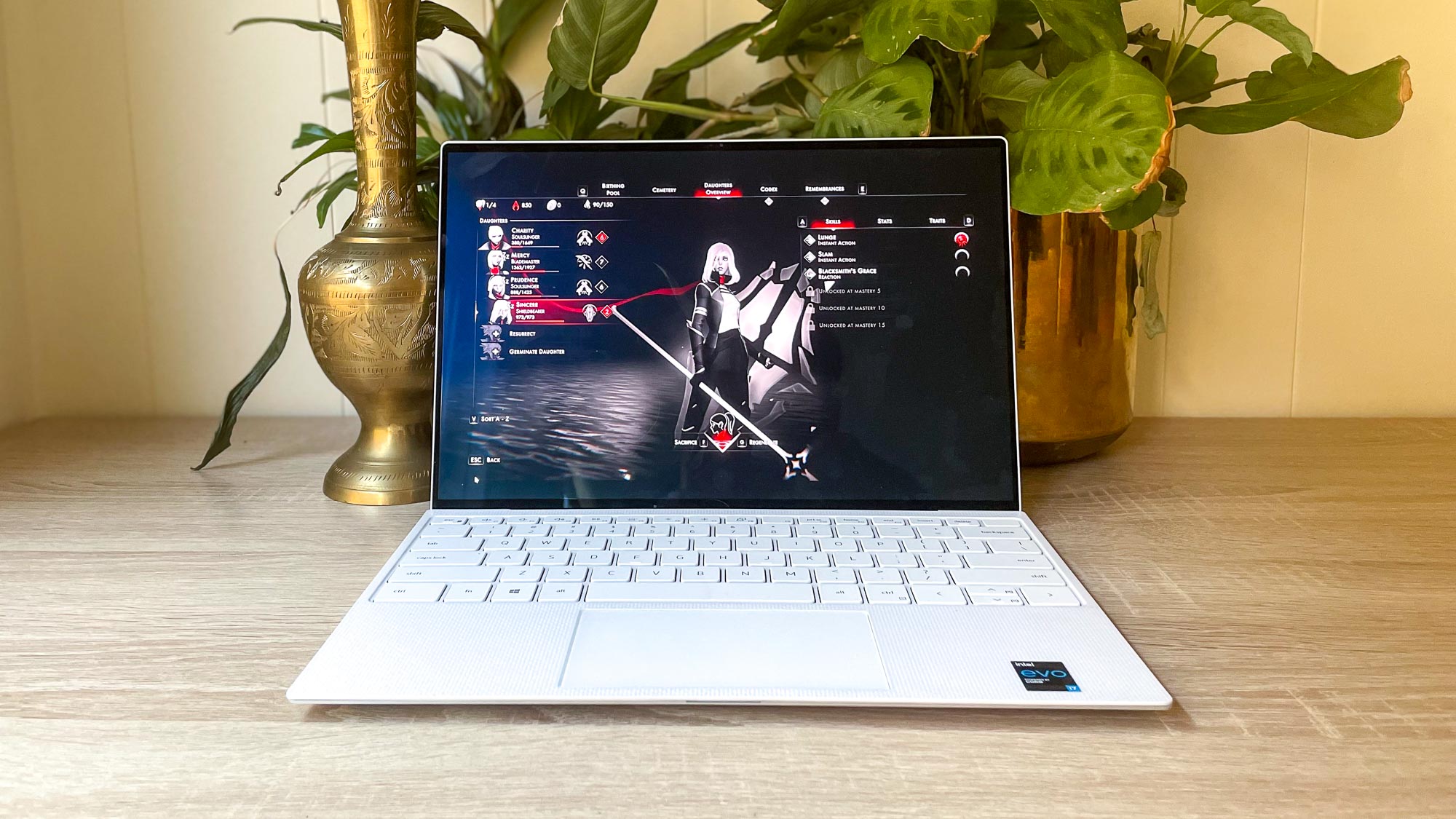
Our Handbrake video editing test revealed that the XPS 13 transcoded a 4K video to 1080p in 18 minutes and 12 seconds. The MacBook Pro 14-inch grabs another victory here by transcoding a 4K video to 1080p in 4 minutes and 51 seconds.
Both laptops lacked in terms of their gaming performance. The XPS 13 ran Civilization IV at an abysmal 22 frames per second at 1080p. Civilization IV ran at 46fps on the MacBook Pro. That’s more than twice the frame rate of the XPS 13, but it’s still below the 60fps minimum most PC gamers expect.
We don’t need a deep analysis to determine a winner here. The MacBook Pro 14-inch is a superior beast when it comes to performance.
MacBook Pro 14-inch (2021) vs Dell XPS 13 OLED: Battery life
As with performance, battery life is another area where the MacBook Pro 14-inch excels over the Dell XPS 13.
It’s fair to say that the 3.5K OLED screen on the XPS 13 diminishes the XPS 13’s battery life. During our battery test (where we had the laptop endlessly browsing the web over Wi-Fi with the screen set to a brightness of 150 nits), the XPS 13 lasted 7 hours and 59 minutes. For comparisons' sake, the non-OLED Dell XPS 13 2020 lasted just over 11 hours in the same battery test.
Conversely, the MacBook Pro 14-inch delivered all-day performance. Under the same test, the laptop lasted 14 hours and 9 minutes (also set to 150 nits). If battery life is important to you, Apple's new MacBook Pros have got you covered.
MacBook Pro 14-inch (2021) vs Dell XPS 13 OLED: Webcam
The Dell XPS 13’s 720p webcam won’t win any contests with its grainy video. 720p webcams aren’t uncommon in 13-inch laptops. But in a world where many rely on webcams for work or to communicate with loved ones, the lack of a decent 1080p webcam is a massive disappointment. One saving grace is that you can log in with your face via Windows Hello thanks to the webcam’s IR sensors.

On the other hand, the MacBook Pro’s 1080p webcam is exactly what we want. It delivers brighter, clearer images. The only drawback here has nothing to do with the webcam’s quality, but its placement. Due to the thinner bezels around the webcam, there is now a notch sticking down from the top of the display that obscures a small part of the screen. This is something you get used to over time, but it’s very noticeable at first.
We have to give this win to Apple, as the new MacBook Pros have the clearly superior webcam.
MacBook Pro 14-inch (2021) vs Dell XPS 13 OLED: Verdict
The Dell XPS 13 OLED is one of the best laptops currently available. It delivers with its small light frame, crisp OLED display and responsive touchscreen. We still highly recommend it.
However, it’s clear that the Apple MacBook Pro 14-inch is the superior laptop. The M1 Pro processor delivers stunning performance, especially for professional illustrators and 3D artists. Its Liquid Retina XDR display displays eye-popping colors and strong contrasts that make movies come to life. The 1080p camera will present you in the best possible light and its long battery life ensures all-day usage. Again, this is the finest MacBook Pro Apple has ever released.
The XPS 13 is the better value. But if you’re looking for the best laptop on the market and price isn’t an obstacle, you can’t go wrong with the Apple MacBook Pro.
Sign up to get the BEST of Tom's Guide direct to your inbox.
Get instant access to breaking news, the hottest reviews, great deals and helpful tips.

Tony is a computing writer at Tom’s Guide covering laptops, tablets, Windows, and iOS. During his off-hours, Tony enjoys reading comic books, playing video games, reading speculative fiction novels, and spending too much time on X/Twitter. His non-nerdy pursuits involve attending Hard Rock/Heavy Metal concerts and going to NYC bars with friends and colleagues. His work has appeared in publications such as Laptop Mag, PC Mag, and various independent gaming sites.
